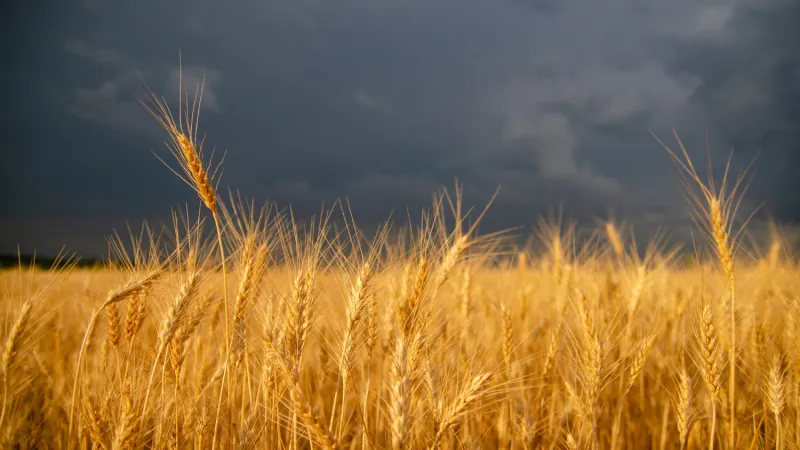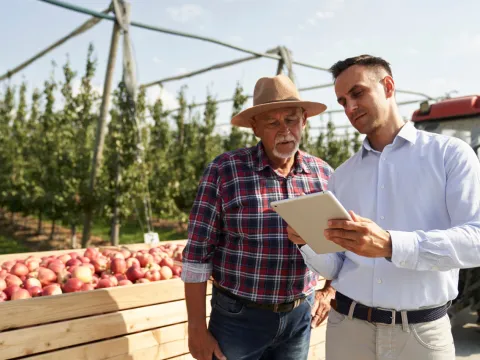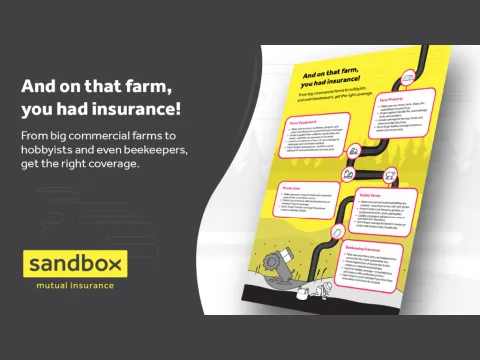
Weathering the Canadian Prairie Storm: Tips on How to Keep Your Farm Secure in the Event of Natural Disasters
Summary
Reading Time
5 min
As a team based in the prairies, we understand better than anyone that the prairie landscape in Canada is extensive. The environment, while full of life, faces changing conditions like blizzards, drought, storms, floods, and hail. The Canadian Prairies are a natural wonder where vastness and mighty nature go side-by-side. Extending across a wide area, this place has eye-capturing sceneries and fertile grounds. Given the uncompromising harshness of prairie weather, every farmer should be prepared for Mother Nature to strike. Yet, despite the hopeful prospects and promises of great crop yields, we know that prairie soil is vulnerable to natural disasters. These events can wreak havoc, causing serious damage and leading to the loss of livestock and crops. Here are our tips on how to keep your farm secure in the event of natural disasters!
The Devastating Effects of Harsh Weather within the Prairies
Nature's Wrath: Thunderstorms
Prairie storms embody nature's fury and are capable of destroying everything in their path with zero mercy or reason. A storm's rumble and a tornado’s spiral can be threatening to farmers and their crops. Being as proactive as possible, not only with the crops but also your farm property, is one of the best ways you can protect your farm’s assets.
The Threat of Drought
Storms might grab all the headlines and media attention, but it's droughts that can sneak up on us, leaving the ground and our spirits dry and cracked. A long time without water and the thirsty soil can't grow plants or keep water reserves, leading to big problems. Due to the sun's unforgiving rays, crops stop growing, causing harvests to shrink and throwing off the whole balance of farming.
What About Flooding?
The Prairies experience the opposite of drought when flooding submerges them with water, but the effects can be just as devastating. When rain and snow melt, water levels rise and the rivers overflow their banks, flooding fields and washing away the soil. In its aftermath, floods leave a path of destruction, drowning crops, infrastructure, and hope under a surge of water and debris, putting farmers and communities to the test.

More Ethylene, More Yield
Realizing the Potential of Weather Predictions for Security
In the midst of changing weather patterns, knowledge is the name of the game. By using the latest science, farmers are able to get weather forecasts and alerts just in time before a storm or drought happens. Equipped with this data, you can take preventive measures to protect your farm and potentially minimize the damage.
The Role of Crop Diversity in Preserving Species
Mono-crop farming shows just how fragile crops can be due to the unpredictability of the elements. By mixing things up through the adoption of crop diversity, farmers can craft a safety net against the uncertainties of weather. Storms, droughts, and floods won't destroy your crop yield when you have a diversified crop portfolio with lots of species with different growth cycles and resistance profiles. This approach not only builds resilience but also supports sustainable farming practices, too!
Building Soil Resiliency
Soil health is basically the backbone of any resilient farm. Think of it as the foundation holding up the entire agricultural ecosystem. Techniques such as crop rotation, cover cropping, and conservation tillage help to strengthen the soil structure, improve water retention capacity, and optimize nutrient cycling. Investing in your soil isn't just about getting more crops; it's about fortifying your farm to handle whatever Mother Nature throws at it... and she’s got a good arm.

Improving Farm Infrastructure to Prevent Threats
Infrastructure is the fortress against nature's aggression, a shield that protects fields and farm livelihoods. Reinforcing barns, silos, and storage facilities is a way to increase the resilience of facilities against storms and floods, protecting livestock and equipment from the fury of nature. Also, building proper drainage systems and stronger levees can allow you to control excess water and prevent flooding to preserve your land.
Insure Your Farm In Case of Natural Disasters
Taking proactive steps like maintaining infrastructure to prevent losses, setting up emergency procedures, and keeping an eye on weather patterns are some of the best ways to protect your farm from natural disasters. But not all things are 100% preventable, and we all know that the weather can’t always be accurately predicted. The most important thing you can do to lessen the financial dangers linked to natural disasters is to buy the proper type of farm insurance policy. Commercial farm insurance, like the Farm Business Box from Sandbox Mutual Insurance, includes coverage for things like property damage due to weather, farm inputs and outputs, and equipment breakdowns. Crop insurance is a separate coverage that is vital to protect against whatever crops may face while they’re in the ground, including losses due to poor weather. Talk to a Sandbox Mutual Insurance broker near you about coverage options in the FarmSecure line and other additional needs you have as a farmer.
Please note that the information in this article may not accurately reflect your insurance policy from Sandbox Mutual Insurance or another insurance company. Please refer to your policy or talk to your broker about your specific coverages.

FAQ'S
What natural disasters should Prairie farmers be prepared for?
Farmers in the Prairies face the full menu of Mother Nature’s mood swings: thunderstorms, hail, drought, floods, blizzards, and the occasional surprise windstorm that rearranges everything. Each brings its own risks to crops, livestock, and infrastructure. Being prepared with strong soil health, solid infrastructure, and the right insurance helps keep your operation resilient—no matter what the skies are cooking up.
How can I protect my farm from major weather damage?
A little preparation goes a long way. Strengthening barns and storage buildings, maintaining drainage systems, diversifying your crops, and improving soil health all help reduce the impact of harsh weather. Staying on top of weather alerts and having an emergency plan in place can also save time, money, and crops when things escalate quickly—as they tend to do out here.
What type of insurance helps protect farms during natural disasters?
Farm insurance is your financial safety net when storms, floods, or droughts cause damage. Sandbox’s Farm Business Box covers things like buildings, equipment, livestock, and production losses. For crops specifically, crop insurance is essential since it protects what’s in the ground from weather-related losses. Pair the two, and you’re not just riding out the storm—you’re securing your farm’s future.



